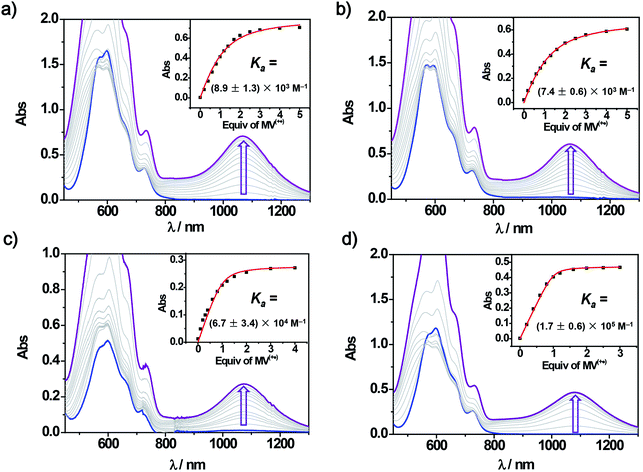 Open Access Article
Open Access ArticleCreative Commons Attribution 3.0 Unported Licence
Correction: Tuning radical interactions in trisradical tricationic complexes by varying host-cavity sizes
Kang
Cai
a,
Yi
Shi
a,
Changsu
Cao
b,
Suneal
Vemuri
a,
Binbin
Cui
a,
Dengke
Shen
a,
Huang
Wu
a,
Long
Zhang
a,
Yunyan
Qiu
a,
Hongliang
Chen
a,
Yang
Jiao
a,
Charlotte L.
Stern
a,
Fehaid M.
Alsubaie
c,
Hai
Xiao
*b,
Jun
Li
b and
J. Fraser
Stoddart
*ade
aDepartment of Chemistry, Northwestern University, 2145 Sheridan Road, Evanston, IL 60208, USA. E-mail: stoddart@northwestern.edu
bKey Laboratory of Organic Optoelectronics & Molecular Engineering of the Ministry of Education, Department of Chemistry, Tsinghua University, Beijing 100084, China. E-mail: haixiao@tsinghua.edu.cn
cJoint Center of Excellence in Integrated Nano-Systems, King Abdulaziz City for Science and Technology, Riyadh 11442, Kingdom of Saudi Arabia
dInstitute for Molecular Design and Synthesis, Tianjin University, 92 Weijin Road, Tianjin 300072, China
eSchool of Chemistry, University of New South Wales, Sydney, NSW 2052, Australia
First published on 27th February 2020
Abstract
Correction for ‘Tuning radical interactions in trisradical tricationic complexes by varying host-cavity sizes’ by Kang Cai et al., Chem. Sci., 2020, DOI: 10.1039/c9sc04860j.
The authors regret that the Ka values in Fig. 1c and d are incorrect in the original manuscript. The correct figure is displayed below.
The Royal Society of Chemistry apologises for these errors and any consequent inconvenience to authors and readers.
| This journal is © The Royal Society of Chemistry 2020 |

